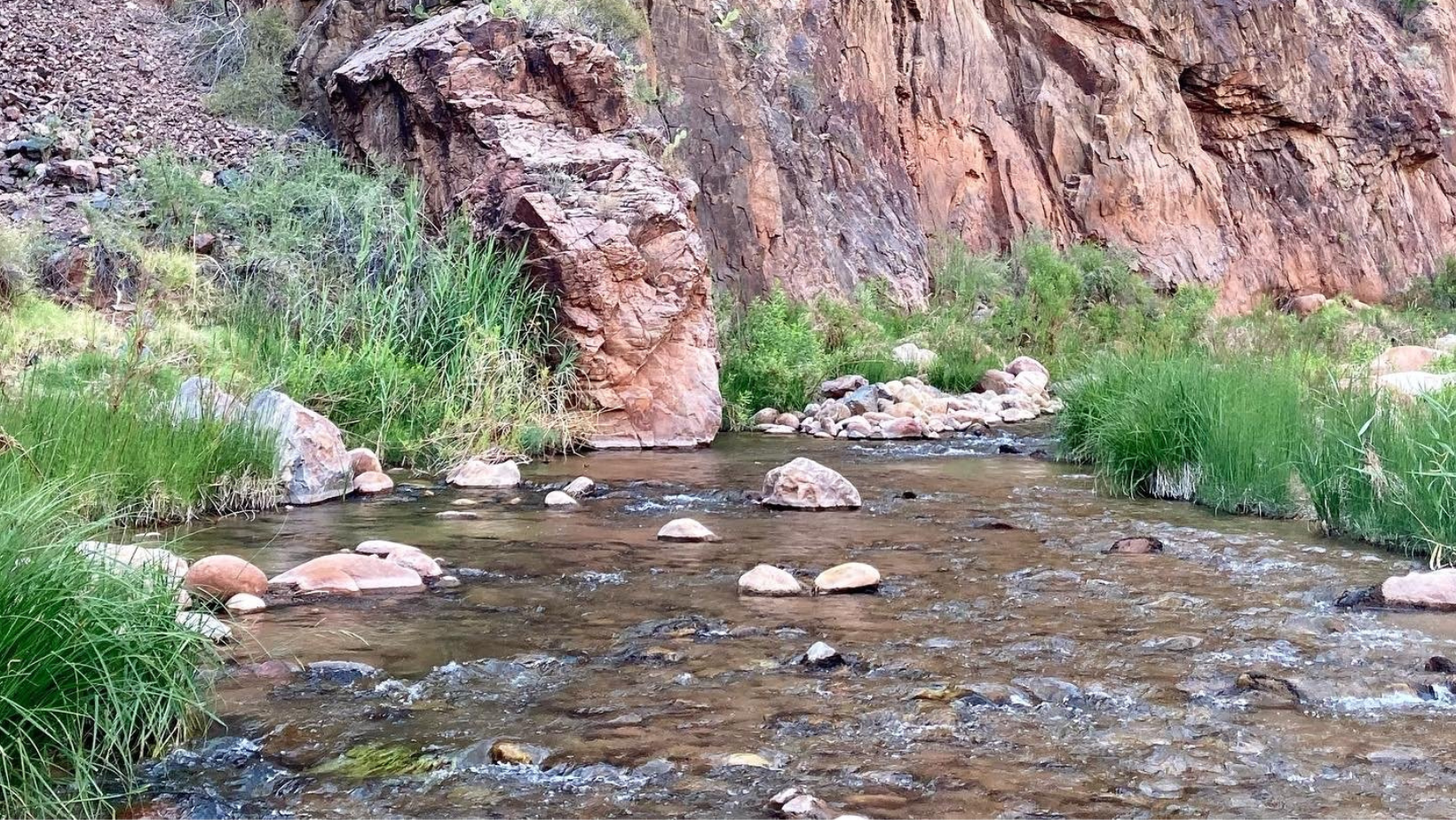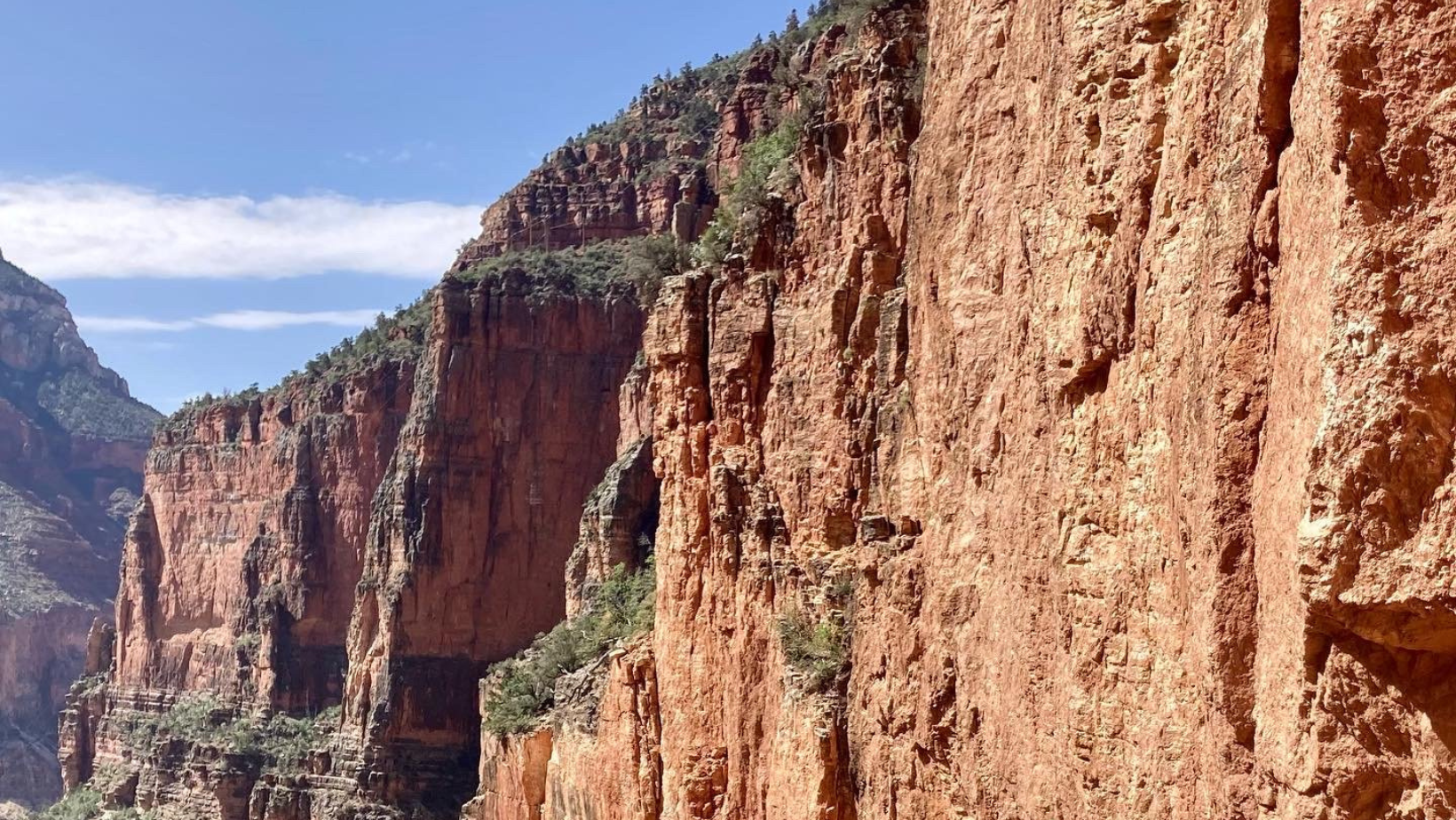
Author: Patrick Bauman, Owner of Colter Backcountry and Get Outdoors Arizona Member
One morning, almost a year ago, I found myself standing on the side of Arizona’s highway 67 at 6am toting a neatly packed backcountry kit and dangling a frozen thumb in the air. To my right, my less-than-thrilled girlfriend* smiled at the infrequent passing cars. Stuck after an unfortunate shuttling glitch, we were attempting to hitch hike to the North Rim of the Grand Canyon. The goal: complete a rim-to-rim hike, from the north side to the south. The secondary goal: fish Bright Angel Creek at the bottom of the canyon.
*We are, I’m glad to report, still happily together, despite this cold misadventure in hitch hiking.
Now, for those who like their fishing with a side of physical discomfort and spectacular views: boy, do I have something for you! Most things named “great” or “grand” have a difficult time living up to their name. If you haven’t been, there’s one thing you need to know about the Grand Canyon: it delivers. Running nearly 300 miles in length, 18 miles across, and averaging over a mile deep, this canyon is, in fact, grand. Prior to this adventure, I had seen what 99% of Grand Canyon visitors see – the view from the top. On this trip, we would start on the North Rim, hike the North Kaibab trail down to Bright Angel Campground, spend the night, and then hike up the Bright Angel Trail to the South Rim. This itinerary would be around 25 miles, lose almost 6,000 feet and gain almost 5,000 feet.
We had started trip planning months ago when we secured a backcountry camping permit in January. At the time, lodging was scarce, and all accommodations on the North Rim were booked. So, we elected to stay at Jacob Lake Inn, a 40-minute drive from the North Rim. On our first day, we drove up from Phoenix, parked at the South Rim, and then hopped on a 4-hour shuttle that drove us to Jacob Lake. Despite assurances over the phone that a shuttle was available from Jacob Lake to the North Rim, we found out upon arrival that we didn’t have a ride to the trailhead. After dinner, we settled on the only plan we could think of: hitching a ride.
The next morning, in the pre-dawn cold, we didn’t have to wait long. We were picked up by a friendly cardiologist and after an hour of pleasant chit-chat, we were filling our water bladders at the trailhead. At over 8,000 feet in elevation, the north rim is cool and forested compared with the rest of the park.
As you hike down beneath the rim, you’ll start to pass through various rock layers. Limestone turns to sandstone, and sandstone gives way to shale. As the geology changes, so do the people. Cross body purses are replaced by trekking poles and stylish loafers slowly turn into Altras. Keep probing the depths of this canyon and you’ll probably even come across the rarest of creatures: an ultra-runner!
Despite the menagerie of people, I was the only one carrying any kind of fishing gear. For much of its length, the North Kaibab trail runs alongside Bright Angel Creek, which eventually runs into the Colorado River. Originally home to native fish like the humpback chub, Bright Angel Creek now has populations of browns and rainbows as well. Known as a good fishery, it’s one of the more difficult trout spots to access in Arizona.

As we hiked down, the weather grew warmer and warmer. By lunch, we had descended nearly 6,000 feet and had a relatively flat hike through Bright Angel Canyon to reach our campground. Despite colder weather on the rims, the bottom of the canyon is typically as hot as Phoenix. In this case, the high temperatures were well into the 90s.
By mid-afternoon, we had reached Bright Angel campground. After setting up camp, we stopped at Phantom Ranch for a refreshing drink and afternoon snack. In between sips of lemonade, I quickly went to work rigging my rod. The campground area is pretty crowded, so I made my way upstream to some quieter water.
Like many Arizona waters, Bright Angel Creek has a sand and gravel bottom and is housed in rock ledges and sprinkled with larger boulders. Unlike most Arizona waters, it is framed by the Grand Freakin’ Canyon. The views looking up while fishing are incredible.
I fished the rest of the afternoon, catching only rainbows on a variety of flies. The fish were mostly concentrated under rock ledges and in deeper runs and plunge pools. This time of year, the water was crystal clear. Despite being near a trail, the creek feels remote, and the only visitors I had were a mule deer doe and fawn. As the light faded below the canyon walls, I headed back to camp for a hearty dinner.
The next morning, we were up in the dark to tackle the climb up the South Rim before the sun rose too high. On this section, hikers are treated to fantastic views of the Colorado River as they transfer to the Bright Angel Trail. We moved upward with the sun, past the River Rest House and Plateau Point, and ate a full breakfast at Havasupai Gardens. We pushed onward through a throng of out-of-breath day-hikers wearing jeans who seemed baffled that we had come from the other side. Eventually we made it to the top, and after a quick rest, got back in the car to Flagstaff, in search of pizza and cold beer.
For those interested: a rim-to-rim hike is well worth it. Whether you do it in one day or multiple, you’ll be amazed at just how much beauty lies within the inner folds of the canyon. And for those who like fishing, well, make sure to pencil in a free afternoon and pack along an extra rod. It’s always worth being the only weirdo carrying fishing gear.
To read more blogs like this one, check out Colter Backcountry.

.png)